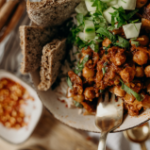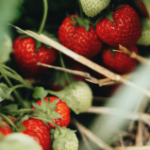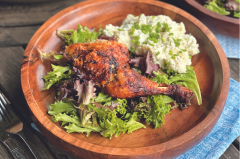Cheers, it’s finally wine o’clock, thinks single mum Katarina as she tucks her son into bed with his favourite story, then reaches for the prosecco bottle to get her through the lonely night ahead. During the global pandemic, working mum Dianne joked with her girlfriends about taking up daytime drinking to help her cope with home schooling her tribe of three. These women are not alone.
Many women, particularly those who are middle-aged, are pouring glasses of wine to signal the end of the workday. A ritual, they say, that helps them to relax and unwind.
There’s no doubt the wine market is skewed to the feminine palate — blokes will pour a beer while slapping each other on the back and cheering on their favourite footy team. Wine for women, on the other hand, is often about a get-together with the girls or a reward after a tough day of juggling their responsibilities. For some, it’s a soothing balm for sadness.
The mum wine culture has an underlying premise that a glass or two of wine will help to solve problems, ease burdens and numb feelings of failure when a woman may have dropped one of the many balls she’d been juggling that day.
A brew or few?
Across the board, both Aussie men and women love to sip, savour and sometimes scull their favourite brew. Drinking in moderation is one thing, but numbers show that one in four (25.8 per cent or five million people) aged 18 years and over exceed the recommended consumption guidelines.
James Ising, psychologist and drug and alcohol worker, says there’s no doubt Australia has an ingrained drinking culture, which can be to our collective detriment.
“I tell my clients it’s the most easily socially acceptable, affordable and most dangerous drug in our society,” he says.
Alcoholic beverages contain ethyl alcohol, which is formulated when yeast ferments the sugars in fruits, vegetables and grains. It works as a nervous system depressant, and effects mood and self-control. It relaxes, it lowers inhibitions and it can be highly addictive.
In the past, the spotlight was firmly on the younger generation and their drinking habits, but not so much anymore. Professor Kate Conigrave, senior staff specialist and addiction medicine specialist at Royal Prince Alfred Hospital, says young people are less likely to be drinkers than they were 10 years ago, with many swapping out alcoholic drinks for low-or no-alcohol versions.
But that’s not the case for everybody.
“Men also have reduced the amount of alcohol they are consuming; what is of growing concern is the number of women drinking to excess — particularly those who are middle-aged,” says Conigrave.
In fact, one study in the Drug and Alcohol Review journal shows about 21 per cent of women between 45 and 60 are now consuming alcohol at binge-drinking levels.
Drink up, it’s good for you
Women and men drink for a host of reasons. Socially they feel buoyed by the tongue-loosening buzz that alcohol produces. Alcohol can boost your confidence if you are shy, and some say it can also make you more creative, as it loosens inhibitions and gets those creative juices flowing.
Alcohol, particularly red wine, in some studies has been linked to longevity. It contains antioxidants called polyphenols, that may benefit blood vessels in the heart and prevent blood clots.
According to Harvard Health, over 100 studies on alcohol show a 25 to 40 per cent reduction in risk for light or moderate drinkers of heart attack, clot-caused stroke, peripheral vascular disease and death from all cardiovascular causes.
But there’s also a gigantic beer-swilling elephant in the room.
Moderation is key. With the growing burden of alcohol issues across the globe, more authorities are tweaking the numbers to reflect what the definition of moderate actually means.
New Australian guidelines were put into effect in December 2020. These are that healthy men and women should drink no more than 10 standard drinks a week and no more than four standard drinks on any one day. The less you drink, the lower your risk of harm from alcohol. Children under 18 and pregnant or breastfeeding women shouldn’t drink at all.
Conigrave, who was the chair of the Drinking Guidelines Committee, says that around the globe, with new evidence about health risks, many countries are lowering their guidelines again. “For example, Canadian drinking guidelines now recommend a max of two drinks a week,” she says.
While researchers have shown many middle-aged women are drinking to levels that place them at risk of harm, their reasons for doing so differ. Dr Belinda Lunnay, postdoctoral researcher at Torrens University with Professor Paul Ward, has completed studies with women aged 45 to 64, exploring social class and the links to why they drink alcohol.
“More privileged women had a relationship with alcohol that was for more positive reasons: drinking alcohol was a form of social connection, a celebration of success — you’ve kept all those balls in the air, being a mum, caring for parents and working, so you deserve that glass of wine,” she says.
Her recent work shows this group of women were open to reducing alcohol intake; they experienced post-drinking regret since establishing heavy drinking patterns in order to get through pandemic restrictions.
While this group perceived alcohol almost as a form of reward, Lunnay says low-income women or women living in poverty drink alcohol for different reasons. “They lead difficult lives — they drink as self-care, not to celebrate,” she notes.
Middle-aged women are open to reassessing their relationship with alcohol, including the sober-curious wellness movement, and Lunnay worries those women living on the breadline will get left behind. “If we task them with sticking to the alcohol guidelines, their hard lives make it feel impossible to do so,” she notes. “They feel they have no substitute; alcohol is the only way to reduce stress if they have a bill they can’t pay, so they have a drink.”
At the very heart of the matter lies a gap between what women need and the support they receive. And multinational booze companies that are raking in billions for their products aren’t making things any easier.
The power of marketing
There’s no doubt that successful media advertising and the drinking mindset are irrevocably linked. Many women who want to give up alcohol, or at least reduce it, are finding it tough. Clever marketing entices with low-calorie versions of your favourite alcoholic drink. Not only does advertising play to





